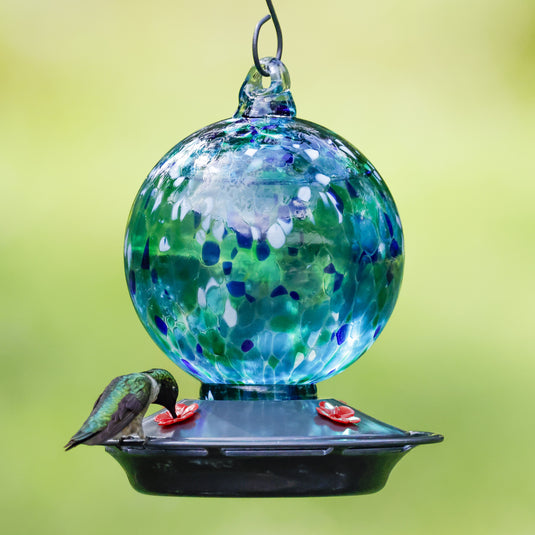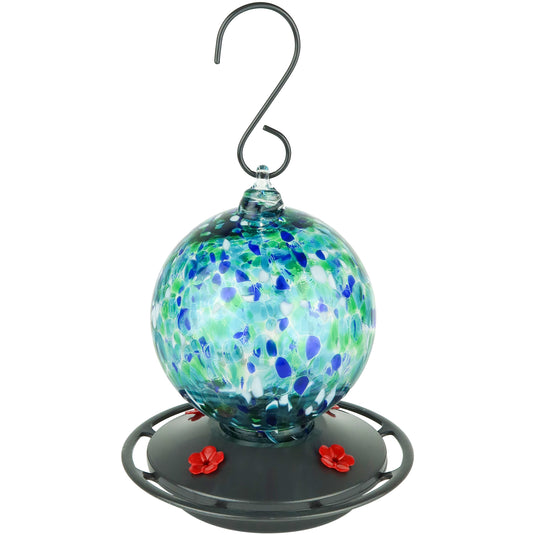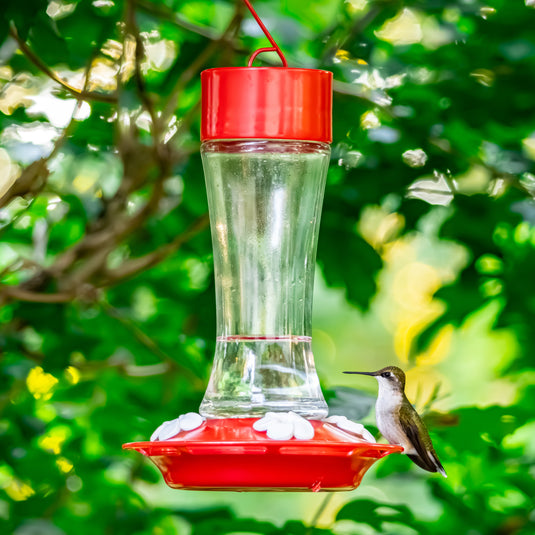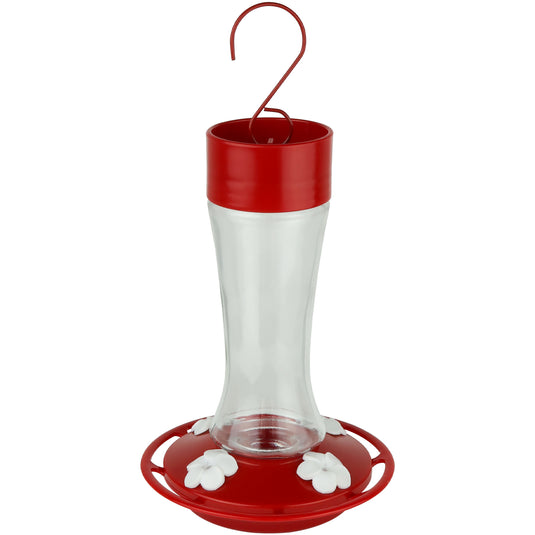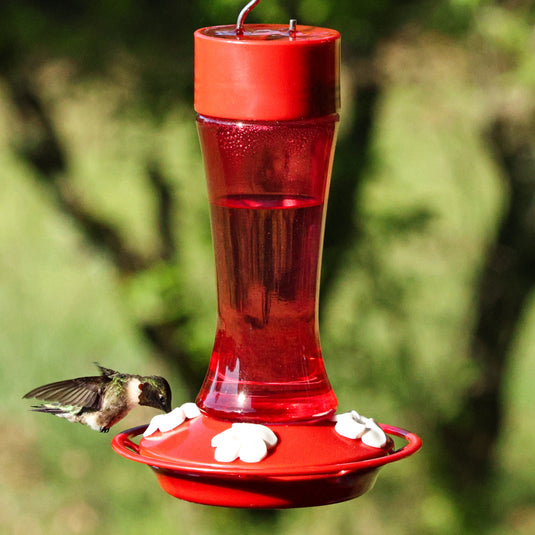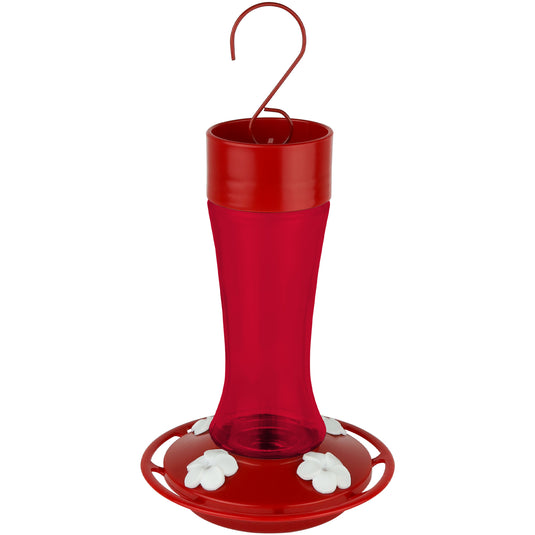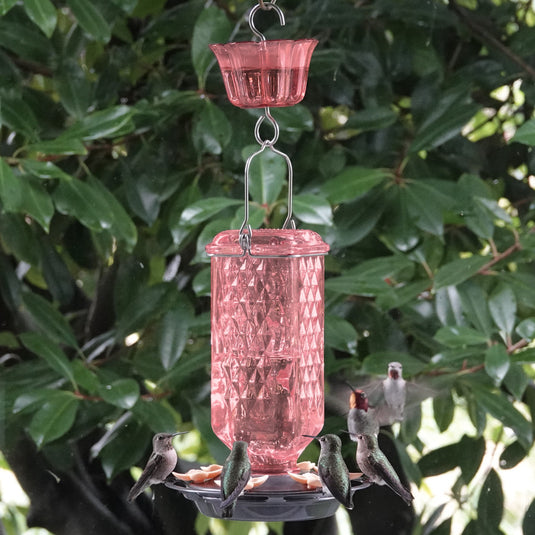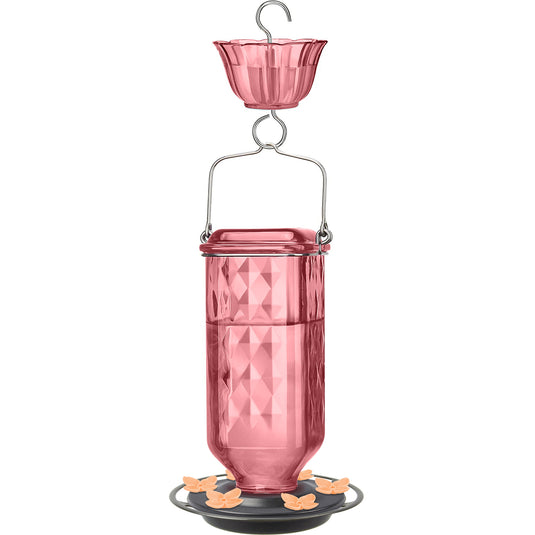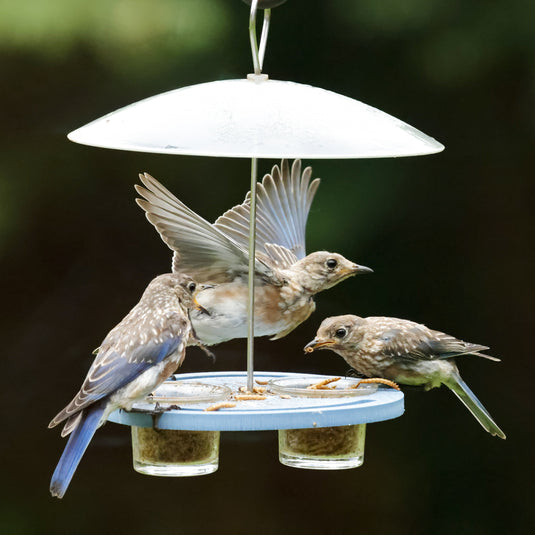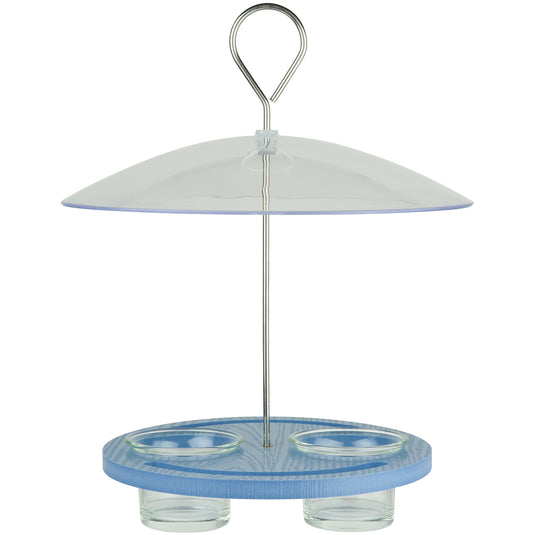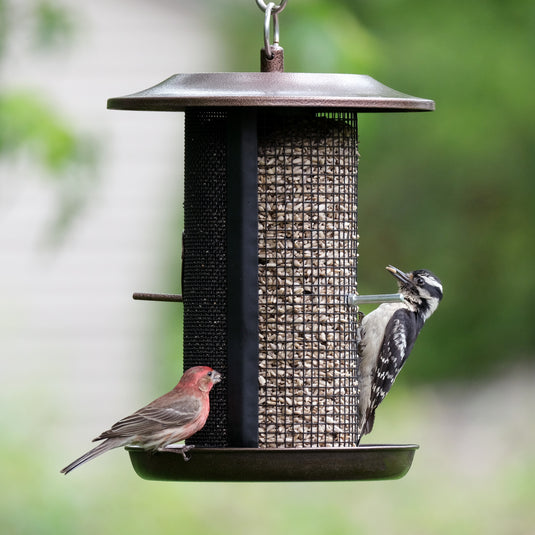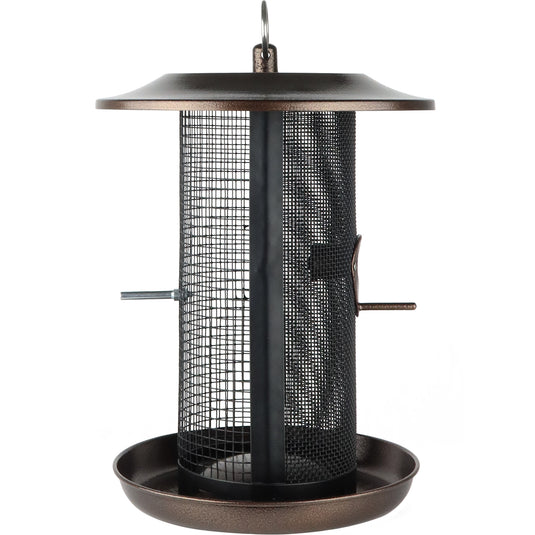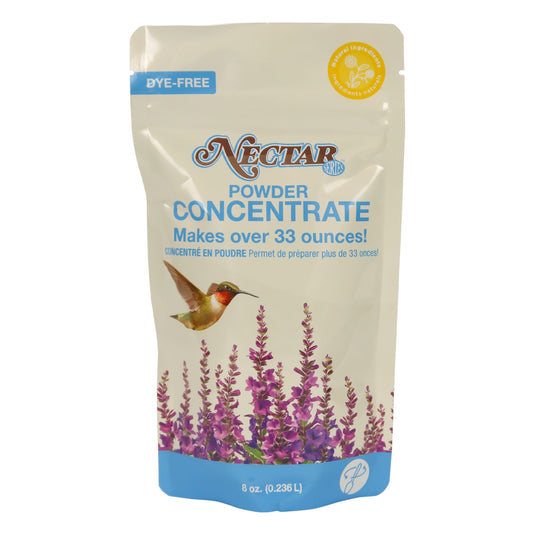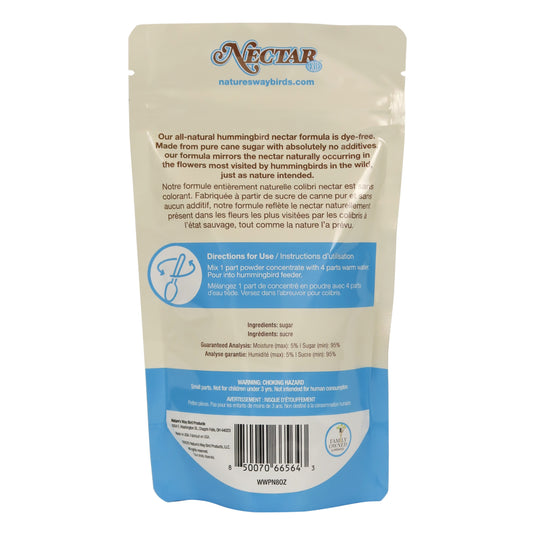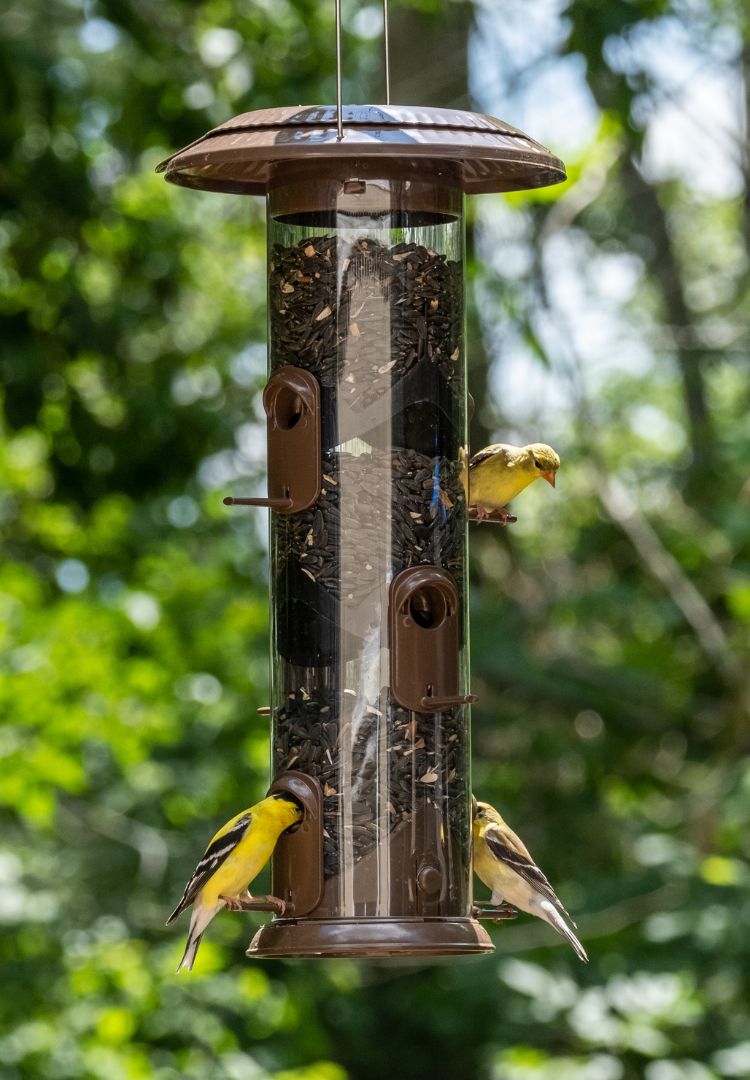Cheerful, colorful, and full of personality, finches are some of the most familiar and beloved backyard birds across North America. From the bright yellow American Goldfinch to the rosy hues of the House Finch and Purple Finch, these small songbirds bring life and music to any landscape.
Finches are known for their lively calls, acrobatic feeding habits, and adaptability to a wide range of habitats - from rural meadows to suburban gardens. Learning to identify the most common finches, understand what they eat, and know where they live can help you appreciate these charming birds even more - and maybe even encourage a few to visit your own backyard.
 Pictured: Male and female American Goldfinch
Pictured: Male and female American Goldfinch
American Goldfinch
House Finch
Purple Finch
Difference between House and Purple Finches
What do finches eat?
How can I attract finches to my yard?
American Goldfinch
Identifying the American Goldfinch:

Pictured: Top – male, bottom – female
This small finch (4.5–5" long, wingspan 7.5–8.5") has a short conical bill and a notched tail. In spring and summer, males display bright yellow plumage with a black forehead and black-and-white wings, while females show a similar but duller olive or tan version.
In winter, both sexes turn a muted olive or brown with blackish wings and pale wing bars. The American Goldfinch is the only finch that molts its body feathers twice a year—once in late winter and again in late summer. Seeing males turn bright yellow in early spring is a sure sign that warmer days are on the way!
Where American Goldfinches live:
American Goldfinches are found across most of North America, from southern Canada throughout the United States and into parts of northern Mexico. They prefer open habitats such as fields, meadows, floodplains, and suburban areas with plenty of seed-bearing plants like thistles and sunflowers. While they are year-round residents in much of the U.S., northern populations often migrate southward during winter to avoid harsh weather and find more abundant food sources.

Fun Fact:
American Goldfinches are often called musical flyers. Their flight bounces up and down like a roller coaster, and they add a cheerful “per-chic-o-ree” call in rhythm with their wingbeats.
House Finch
Identifying the House Finch:
 Pictured: Top – male, bottom – female
Pictured: Top – male, bottom – female
These small-bodied finches have large beaks, shorter wings, and a comparably long slightly notched tail. Roughly 5 to 5.5 inches in length, these streaky grayish-brown finches are dimorphous, with the males distinctly marked by rosy red coloring around the face and upper breast. Coloring can vary from bird to bird as the red of a male House Finch comes from pigments contained in its food during molt. This means the more pigment in the food, the redder the male.
Where House Finches live:
House Finches are found across most of the United States and southern Canada, as well as parts of Mexico. Originally native to the western U.S. and Mexico, they were introduced to the eastern states in the 1940s and have since spread nationwide. They thrive in a wide variety of habitats, including urban areas, suburbs, farms, deserts, and forest edges -anywhere with trees, shrubs, or buildings for nesting. House Finches are largely non-migratory, remaining year-round residents throughout most of their range.

Fun Fact:
House Finches are true stay-at-home birds. Unlike many finches, they’re mostly non-migratory. Once they find a reliable food supply, they’ll happily stay in the same neighborhood all year long.
Purple Finch
Identifying the Purple Finch:
 Pictured: Top – male, bottom – female
Pictured: Top – male, bottom – female
These small stocky-bodied finches have large powerful conical beaks, shorter wings, and a seemingly short, notched tail. Roughly 5 to 6 inches in length, these streaky grayish-brown finches are dimorphous, meaning male and female birds have different coloration. Male Purple Finches are a delicate dusky pink-red on the head and breast, mixing with brown on the back and cloudy white on the belly. Female Purple Finches have no pink or red coloration anywhere on the body. Instead, they are coarsely streaked on their undersides and have strong facial markings including a whitish eye band and a chunkier dark brown line down the side of the throat. Coloring can vary from bird to bird as the red of the male's coloring comes from pigments contained in its food during molt. This means the more pigment in the food, the more vibrant the male's coloration.
Where Purple Finches live:
Purple Finches are found throughout much of North America, with breeding populations primarily in Canada, the northeastern United States, and parts of the Pacific Northwest. They prefer coniferous and mixed forests, wooded areas, orchards, and suburban neighborhoods with abundant trees and shrubs. Northern populations often migrate south in winter to the United States, while birds in milder climates may remain year-round residents.

Fun Fact:
Purple Finches aren’t really purple. Males are splashed with raspberry-red tones across the head, chest, and back, while females are streaky brown with a bold white eyebrow.
What’s the difference between the House Finch and the Purple Finch?
Although these two finch species are similar in appearance they can be distinguished quite easily in the field. Both male and female house finches sport a more slender body with a longer tail sporting a shallower notch. The male House Finch's bold coloring is more of a red-orange limited to the face and chest area while the male Purple Finch is a rosier, pink-red coloring that extends past the face and down the back. The female House Finch have a more blurred streaking pattern in the brown and tan feathers on their flanks and also a plainer face. In comparison, the female Purple Finch is coarsely streaked below and has a pronounced darker brown line down the side of the throat and a whitish eyebrow.
When identifying between similar species it is also important to note the location and time of year. While these two species do have territory overlap, Purple Finches are typically only found in the United States during non-breeding months with the exception of the Western cost and most northeastern states whereas the House Finch is found throughout most of the United States year-round.

What do finches eat?
Finches primarily eat seeds, with favorites including black oil sunflower and Nyjer® (thistle) seeds. They also enjoy cracked corn and suet. During warmer months, their diet expands to include buds, fruits, and small insects, providing extra nutrients and protein.
How can I attract finches to my yard?
To attract finches to your yard, provide the right combination of food, shelter, and a welcoming environment. Choosing the right finch feeder is key – mesh feeders allow finches to cling naturally as they eat, while sturdy hopper and platform feeders can also work for seeds like black oil sunflower and cracked corn. A clear window bird feeder is a unique option to view finches up close! Tube feeders with specially designed thistle inserts or openings can accommodate fine Nyjer/thistle seed, while traditional tube feeders can work for larger seed. Don’t forget water! Keeping a birdbath filled with fresh water will attract finches for drinking and bathing.
Creating a safe environment is essential to keeping finches coming back. Avoid using pesticides, as finches may feed on plants and seeds from treated areas. Consider alternatives like insect houses and plant native flowers that produce seeds finches love, such as coneflowers, sunflowers, and thistles.
Providing natural shelter, like dense shrubs or trees, offers protection from predators and harsh weather. By combining these elements, you can make your yard a finch-friendly haven and enjoy their cheerful songs and bright colors all season long.
RELATED ARTICLES






